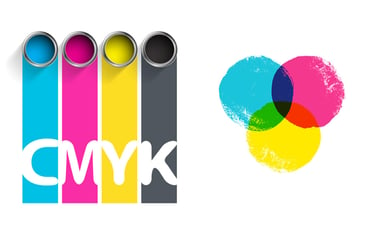CMYK Color Mode
CMYK color is a printing model using cyan, magenta, yellow, and black inks to create colors on paper.
COLOR
Avinash
10/30/20251 min read


The CMYK color model is the standard way that printers mix colors to create images and text on paper. It stands for Cyan, Magenta, Yellow, and Key (Black)—the four inks that are combined to produce a vast range of colors in printed materials.
How CMYK Color Works
CMYK uses a "subtractive" approach, meaning each ink covers parts of white paper, subtracting light to show different colors. When all colors are used at 100%, the result is black; when none are applied, the paper stays white. Cyan removes red light, magenta absorbs green, and yellow blocks blue—layering these inks makes many shades possible.
Black (K) is added to the process to create true, deep blacks and save on ink costs. If only cyan, magenta, and yellow were mixed, the darkest result would be brown, so a separate black ink improves quality and efficiency.
CMYK vs. RGB
CMYK is for printing on paper, while RGB is for screens.
CMYK starts with a white background and gets darker with more ink.
RGB creates colors with light, starting from black and getting lighter.
Some bright colors on screens (RGB) may look different when printed (CMYK), so designers convert files before printing.
Why CMYK Matters
It’s used in magazines, posters, packaging, and almost all printed graphics.
Designers use CMYK in software to make sure colors appear correctly in print.
CMYK allows for consistent, reliable color reproduction across many kinds of print jobs.
CMYK is how vibrant, accurate colors appear on printed materials everywhere—from newspapers to photographs—and knowing how it works is key for designers who want their projects to look perfect in print.
